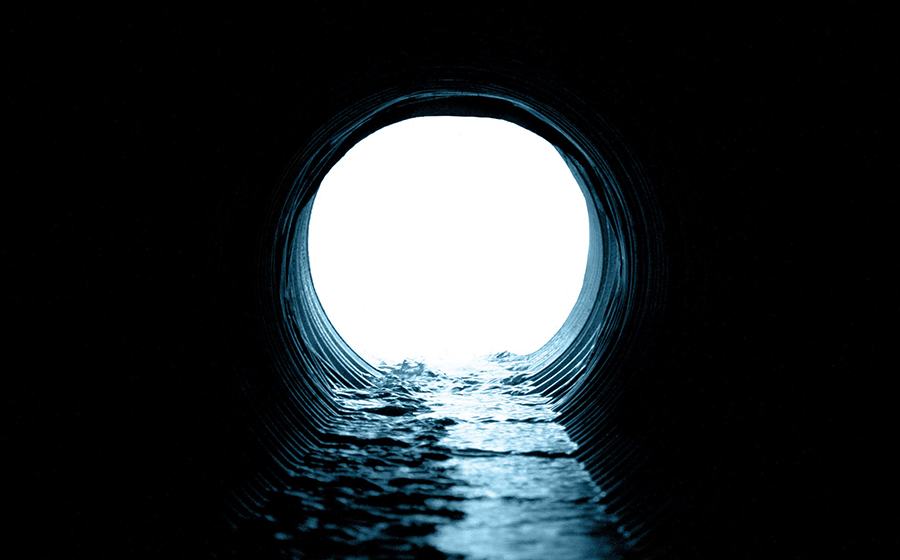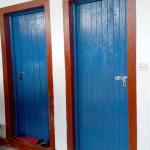Sewer Services
Storm Water Drains and Foul Sewers in Mombasa were designed to carry flows separately to the ocean. Storm water is discharged directly to the ocean. Sewage is treated before discharging to the Marine Environment. The defunct Municipal Council through its Engineering Department was responsible for both storm water and sewerage facilities. In 2005 asset holding of Sewerage facilities was transferred to CWSB through a Lease Agreement (LA). Mombasa Water through A Service Provision Agreement (SPA) with CWSB took over the facilities for operation and maintenance only.
Island Sewer Network
The sewerage system in the Island covering about 105 hectares was built to serve the Old Town and the Central Business District with a Population equivalent of 33,000 people. The system consists of sewers and tunnels running close to 23 km with diameters ranging from 150 mm to 600 mm made of pitch fiber, concrete, steel and asbestos cement and consists of 495 manholes.
Raw sewage Island Pumping Stations
There are four pumping stations, located along the sea front on the eastern side of the Island which separately lift sewage from low areas through rising mains into the gravity system that leads to the Kizingo Treatment Plant. All the four Pumping Stations are similar in design with two single stage pumps, one duty and one standby.
Kizingo Sewage Treatment Plant
The Kizingo Plant was designed to provide Primary treatment only. The screens and the sedimentation tanks were constructed underground, beneath the Mombasa Golf Course. The Screenings were automatically raked in the first chamber. At the bottom of twin tanks with three hoppers sludge that had accumulated was removed under hydrostatic pressure and discharged through a Sludge Draw-Off Pipe directly to the ocean on the ebb tide. The supernatant was discharged through an outfall 43 m away, 2m bsl.
West Mainland Sewer Network
The first sewers were built here in 1952 to serve the Government housing estates in Changamwe. In 1957 the piped sewerage was extended to serve the rail served Industrial area and later extensions were provided to serve the oil refinery and parts of Magongo. The Old Changamwe trunk sewer gravitates sewage through Kalahari informal settlement to Kipevu.
In the 1980s and 1990s the system was extended to serve the newly developed site and service schemes of Miritini, Chaani and Mikindani and Port Reitz. Diameters range from 200 mm to a maximum of 1000 mm and pipe materials being PVC, steel and concrete. There are over 50 Km of main sewers covering nearly 40% of the developed area. The rest of the area can be served by the existing mains and treatment plant provided secondary sewers are constructed.
The Chaani and Changamwe trunk sewers both convey wastewater separately to the Kipevu treatment plant entirely by gravity. Blockages occur mostly in small size sewers in built up areas. Miritini and Mikindani Site and Service Schemes and the Port Reitz Area, have pumping stations and rising mains which discharge to the Chaani trunk sewer. A Low lift pump is also provided after the Miritini rising main at Jomvu. A Chamber on the Port Reitz gravity line is provided near the MTC staff houses for screening before sewage reaches Port Reitz pumping station.
Kipevu Sewage Treatment Plant
The Plant is located at Kipevu, adjacent to Kilindini Harbor with an outfall at berth No.14. It is an extended aeration facility, utilizing an oxidation ditch system, constructed under the Phase I of Mombasa Sewerage Project to replace the original Biological Filter Plant. The plant commissioned in the Year 2000, consists of pretreatment, aeration, clarification, sludge processing and sludge drying units. The plant was designed to serve a population equivalent of 200,000. The inflow is currently at less than 40% of the Design Average Dry Weather Flow of 17100 cm/day.



